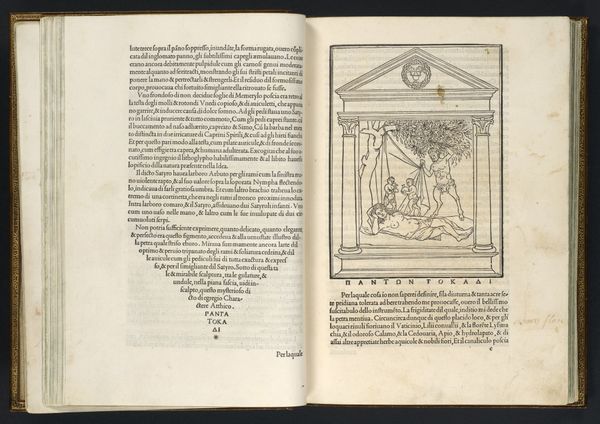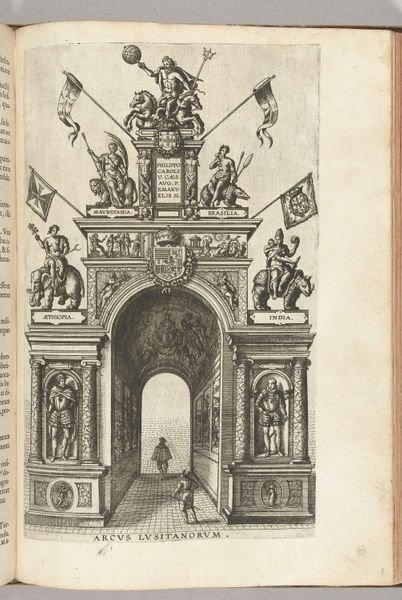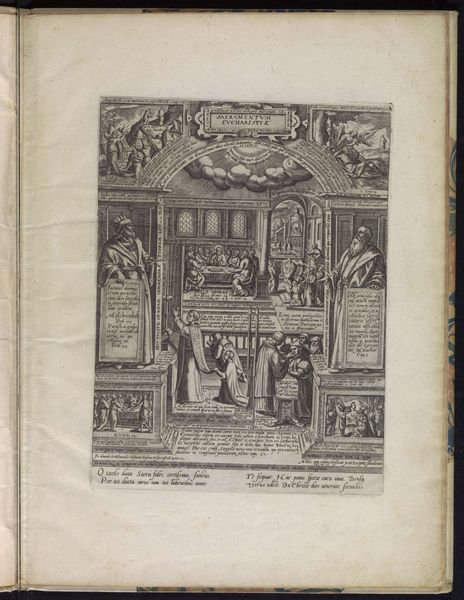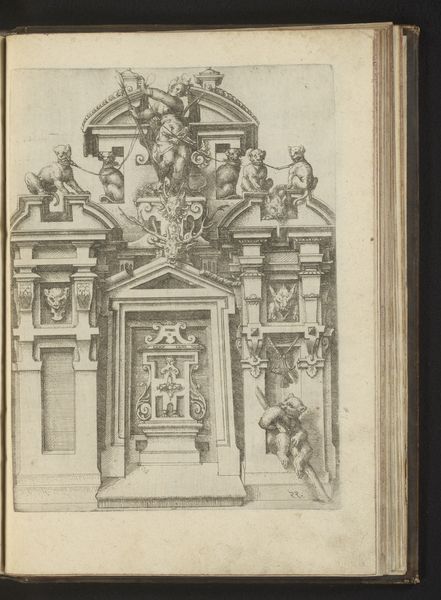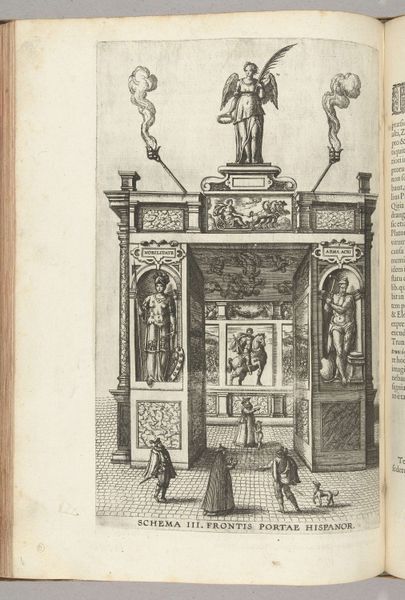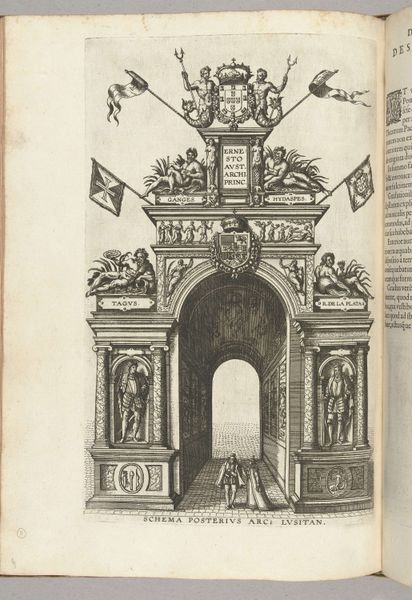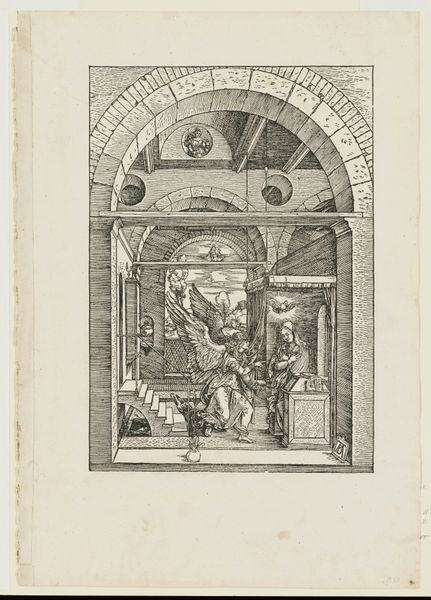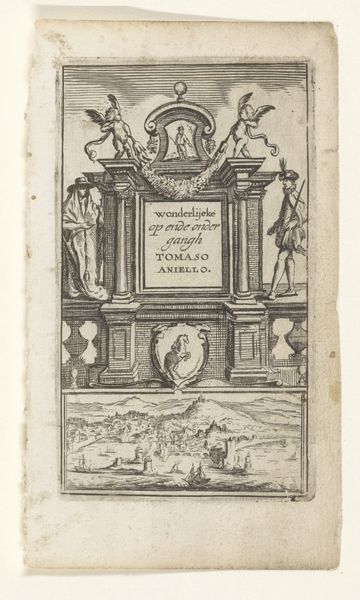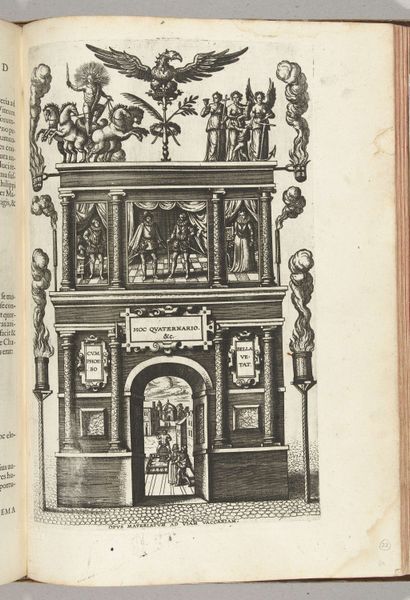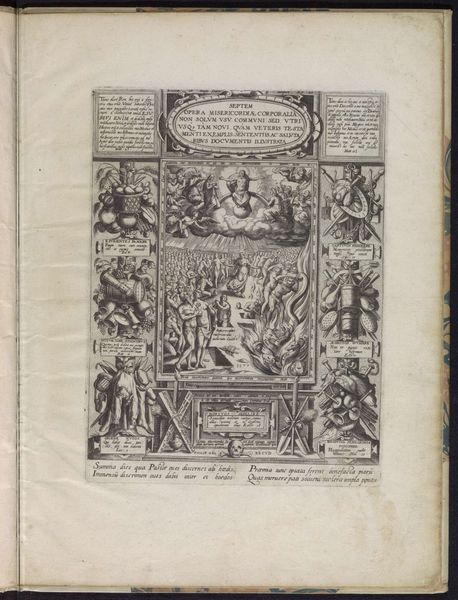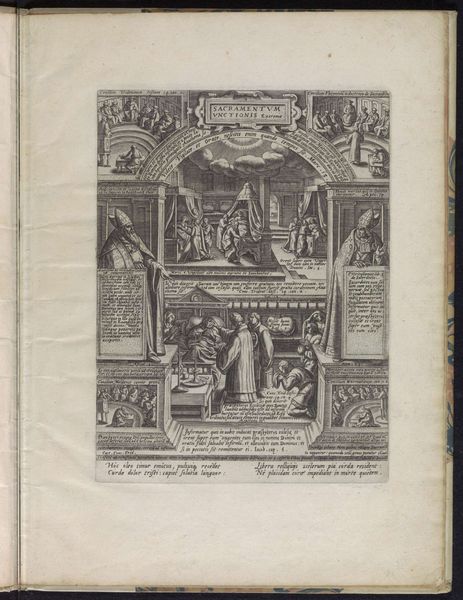
Bath House from Hyperotomachie ou discours du son gede Poliphile, plate 69 from Woodcuts from Books of the XVI Century c. 1554 - 1937
drawing, print, paper, woodcut
drawing
paper
11_renaissance
woodcut
italian-renaissance
nude
Dimensions: 173 × 139 mm (image); 281 × 152 mm (image/te×t); 301 × 199 mm (sheet)
Copyright: Public Domain
Editor: So, here we have a print from the Art Institute of Chicago, "Bath House," an illustration from "Hypnerotomachia Poliphili," dating from around 1554, attributed to Jean Goujon. The scene it depicts—figures bathing—gives off a rather idealized, almost voyeuristic feel. What's your take? Curator: You’re right, there's an undeniable sense of idealized voyeurism at play. But let’s think about the context. "Hypnerotomachia Poliphili" itself is a complex allegorical romance. Consider how these bathhouses functioned in Renaissance society - beyond mere hygiene, they were social and often politically charged spaces, weren't they? Editor: Politically charged? How so? Curator: These spaces, though seemingly private, were sites where power dynamics were negotiated, where gender roles were both performed and challenged. Look at the figures; notice their poses, their interactions. How might the artist be commenting on notions of femininity and access in that period? Editor: I guess I was so focused on the sort of objectification present, I didn't really consider a potential critique of power at the time. It seems so progressive to look at the historical gaze that the print invokes, not just at what’s being shown. Curator: Precisely! By juxtaposing classical architecture with everyday social rituals, the artist provokes conversations about social order, about beauty standards, about who has the 'right' to observe and participate. Does thinking of the artwork this way change your initial reaction? Editor: Absolutely, it adds layers of complexity and suggests a critical consciousness that I initially overlooked. I see that by engaging with both historical and modern thought we can analyze works that we've had preconceived notions of. Thanks for pointing out the role of context in understanding what this piece shows.
Comments
No comments
Be the first to comment and join the conversation on the ultimate creative platform.
